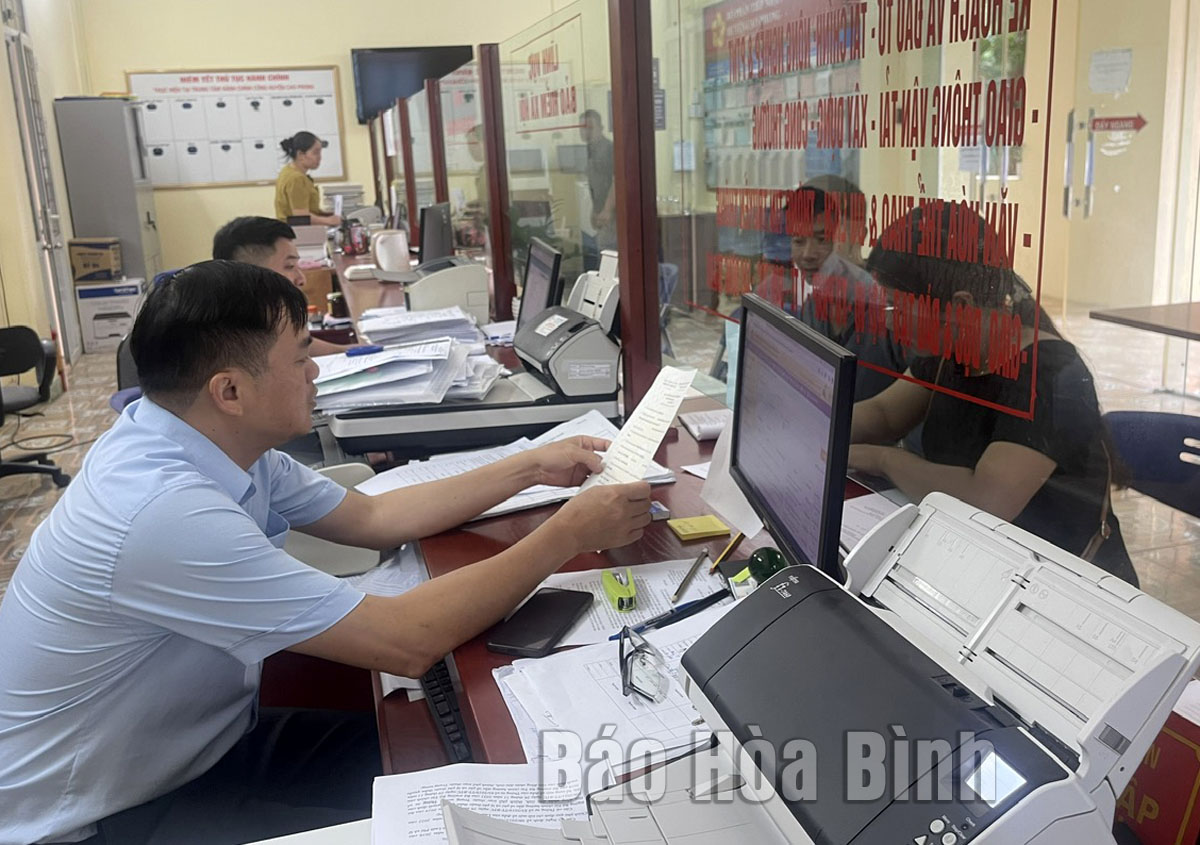(HBO) – Cao Phong district’s application of information technology (IT) in the management and operation of administrative procedures as well as production development has so far yielded positive outcomes.
The district’s administrative section for document receipt and result delivery facilitates organisations and individuals to complete procedures.
According to Nguyen Hoang Huy, Deputy Director of the Cao Phong Department of Culture and Information, local specialised organs at the district and commune levels are active in IT application in their works, contributing to administrative reform. The district has seen its telecommunications and internet infrastructure upgraded with advanced technology and expanded to serve even remote areas.
Four enterprises (Viettel, Hoa Binh Telecommunications, Mobifone, Vietnammobile) have invested in building 46 transceiving stations in 10 communes and towns, serving infrastructure development for mobile information services, including 3G, 4G, and 5G. Approximately 80% of the local population use mobile and landline phones, while 100% of government agencies and schools are connected to the internet. The percentage of people using the internet is around 65%.
To date, the district- and commune-level one-stop-shop departments provide administrative procedures in an electronic environment, with 100% of agencies and units under the district- and commune-level People's Committees using digital signatures. In the first six months of this year, 6,747 public service applications were received, of which 6,643 or 98.5% were submitted online.
However, the IT infrastructure in the district remains weak, and the system equipment of most agencies and units is outdated, with low configuration and a lack of timely upgrades. The IT proficiency of officials and civil servants, meanwhile, is uneven.
To achieve effective IT application and digital transformation, Cao Phong plans to continue developing infrastructure and a shared data platform as the basis for a digital government database. It will construct an intelligent operation centre (IOC) and paperless meeting rooms to connect shared data information systems in various fields for management and operation.



